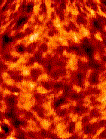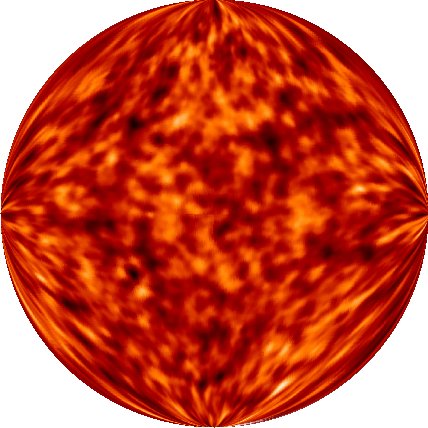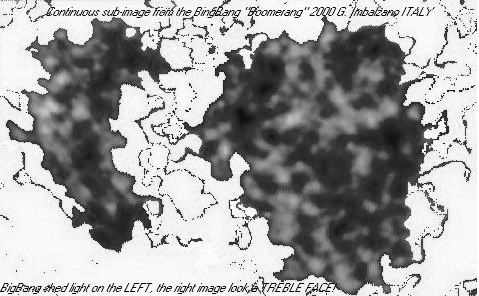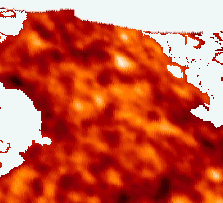Classical & Modern physics [ASC] ~~~ ~~~
The elementary Planck's probability P = exp(-E/kT) so that
"LA FISICA NELLA SCUOLA" Anno XXXI n.1 Supplemento (gennaio-marzo 1998):
: = Estremi della Rivista = :
REG. Tribunale di Modena, con atto n.540 del 29-1-1973
~ SUMMARY {some font face="symbol"} ~
do = S{n>0} exp(-n.E/kT)= 1/(exp(E/kT) - 1) --> 1/(eL-1), with L(P=max)~4.9651,
involves the infinitesimal variation -dP/P=d(E/kT) where, if a
"chemical potential" Gp exists: E-->G-Gp.
Besides, for the Wien-Planck's law, dimensionally
P = P(hf/kT) = P(E/kT) --> P=P(G/kT-Gp/kT).
It's possible to describe this distribution for a given "stationary" temperature
To=constant,
that is one can regard the indipendent variations
P=P(E/kTo) or P=P(Eo/kT), respectively:
(1) dP/P = -(dG/kTo - dGp/kTo) ;
(2) dP/P = GodT/kT2 - GpodT/kT2 .
In (1) at the generic -G=-hf (bosons pressure)
one usually add a Gp=Gp(r) which depends on the position r.
From the law
Gp = hfp => hc/lp
naturally can be reached the minimum attractive potential
dGp = hc.dlp/lp2, Coulomb like.
Besides
lp=lpo(1-Gp/kTo) or
(lp-lpo)kTo+lpoGp=0
considering
Gp=kTo-kT (To>T,
lp < lpo)
that is lpkT=lpokTo
in the bounds of the well known proportion law
po/To=constant.
On the other hand, the analogous limit condition
hfo/To=constant supplies
Gpo/Go=a
(near to the equilibrium one can write
Gp=aG).
Therefore -dGp= hc.dlp/lp2=
-hc.d(1/lp)= -hc.d(1/(lpo(1-Gp/kTo))= -d(hfpo/(1-Gp/kTo)).
Then the minimal variation do due to the "chemical potential" Gp generally implies
do --> d= 1/(exp[(G-Gp/(1-aG))/kT] -1)= 1/(exp[(G-aG/(1-aG/kT))/kT] -1)= 1/(exp[L(1-a/(1-aL)] - 1).
Following Enrico Fermi, I equalize the interaction probability d to the ratio of the perturbative energy Gp to
G= Gp / ao :
ao = Gp/G = q2/(2ehc),
so ao = 1/(exp[L-aoL/(1-aoL)] - 1).
Solving the trascendent equation respectively to ao with the theoretical value of L (P max) one obtains in short
ao ~ 1/137.037 < 1/137.036 ~ a (Er ~ 6. 10 -6).
If one take into further (quantum-relativistic) corrections the
ao value may be improved, until it coincides almost with a.
![]() =!= Supernove, congiunzioni planetarie e sismicità
terrestre! =!=
=!= Supernove, congiunzioni planetarie e sismicità
terrestre! =!=
 RESEARCH on:
RESEARCH on:
 ./majorana//ricerca.htm
./majorana//ricerca.htm

